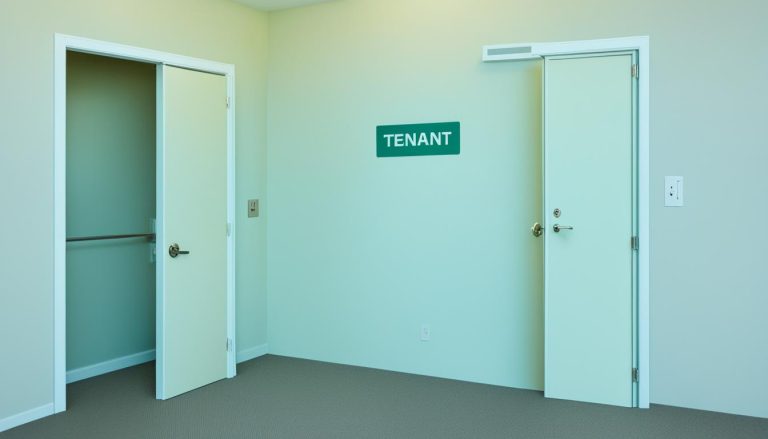Welcome to our guide on severance of joint tenancy, a legal process that allows property owners to change their legal ownership to tenants in common. Whether you’re considering estate planning, property income distribution, or facing separation/divorce, understanding the steps involved is crucial to gaining control and flexibility over your property ownership.
In this article, we’ll explore the key steps and tips for severance, providing you with the information you need to navigate this legal process successfully. From agreeing on ownership division to serving notice and registering the severance with the Land Registry, we’ve got you covered.
So, if you’re ready to safeguard your legal ownership and explore the benefits of tenants in common, let’s dive in and discover the essential steps for severance of joint tenancy.
Reasons for Severance of Joint Tenancy
There are several compelling reasons why individuals choose to sever a joint tenancy. Let’s explore these reasons in more detail.
1. End of Survivorship
By severing a joint tenancy, individuals can effectively end the automatic right of survivorship. This means that upon the death of one owner, their share of the property will not automatically pass to the surviving owner(s). This can be particularly advantageous when it comes to estate planning, allowing individuals to have more control over how their property is distributed after their passing.
2. Property Income
Severance of a joint tenancy enables unequal sharing of property income. For co-owners with different financial situations, this can be highly beneficial. It allows for a fair distribution of income based on each owner’s contributions or needs, ensuring that everyone is able to derive maximum value from the property.
3. Separation/Divorce
In separation or divorce proceedings, severing a joint tenancy becomes crucial. By severing the tenancy, individuals can prevent their ex-spouse from automatically inheriting the property. This ensures that ownership interests are clearly specified for future sale or transfer and provides certainty and protection during this difficult time of separation.
Severing a joint tenancy can provide individuals with greater control and flexibility over their property ownership. From ending the right of survivorship to allowing unequal property income distribution and protecting interests in separation/divorce cases, it is clear why severance is a common solution for joint property owners.

Process for Severing a Joint Tenancy
The process for severing a joint tenancy is relatively straightforward. To begin, the owners must agree on the division of ownership, determining how the property will be shared among them. This agreement on ownership division ensures a clear understanding of each party’s rights and interests.
Once the agreement is reached, the next step is to serve a notice of severance to all the other owners involved. The notice of severance officially communicates the intention to sever the joint tenancy and initiate the process. It is important to provide the notice to all the owners to ensure transparency and avoid any misunderstandings.
If the notice of severance is refused by any of the owners, alternative evidence of service may be required. This evidence can include delivery confirmation, registered mail receipts, or any other form of proof to demonstrate that the notice was properly served.
After serving the notice of severance, the next step is to complete Form SEV. This form is a legal document that outlines the details of the joint tenancy severance, including the agreed-upon ownership division. It is essential to accurately complete this form to ensure the legality and validity of the severance.
Once Form SEV is completed, it needs to be sent, along with the signed acknowledgment of receipt, to the Land Registry. Registering the severance with the Land Registry finalizes the process and ensures that the changes in ownership are legally recognized.
The length of the process for severing a joint tenancy can vary depending on the complexity of the situation. In simple cases, it can be completed within 1-2 weeks. However, more complex cases may require additional time for negotiations and legal procedures.
Overall, the process for severing a joint tenancy involves reaching an agreement on ownership division, serving a notice of severance, completing Form SEV, and registering the severance with the Land Registry. Following these steps ensures a smooth and legally compliant transition from joint tenancy to tenancy in common, allowing for greater control and flexibility in property ownership.

Can I Sever the Joint Tenancy Myself?
While it is possible to sever a joint tenancy yourself, it is recommended to seek professional advice before making any changes to ownership arrangements. There are risks and benefits associated with both joint tenancy and tenancy in common, and a solicitor can provide clarity and ensure a full understanding of the implications before making any decisions. It is important to have a comprehensive understanding of the legal aspects and potential consequences before proceeding.
The Risks and Benefits
Severing a joint tenancy yourself may seem like a cost-effective option, but it is not without risks. Without proper knowledge of the legal process and potential pitfalls, you could inadvertently create complications or conflict with other co-owners. Additionally, severing a joint tenancy can have significant financial and tax implications that should be carefully considered.
On the other hand, seeking professional advice ensures that you have expert guidance throughout the process. A solicitor specializing in property law can assess your specific situation, explain the risks and benefits in detail, and help you make informed decisions that align with your goals and circumstances.
Seek Professional Advice
Severing a joint tenancy is not a decision to be taken lightly. The consequences can have long-term implications for you and your co-owners. To ensure that you fully understand the legal process, the potential risks involved, and the benefits of severance, it is highly advisable to seek professional advice.
A solicitor can guide you through each step of the process, from the initial agreement on ownership division to serving the notice of severance and completing the necessary paperwork. They can provide personalized advice based on your specific situation and help you navigate any legal complexities that may arise.
By seeking professional advice, you can proceed with confidence, knowing that you have made an informed decision that protects your interests and aligns with your long-term goals.
If you’re considering severing a joint tenancy, contact a solicitor specializing in property law today. They can provide the expert guidance you need to make the right choices for your unique circumstances.
Disadvantages of Joint Tenancy

While joint tenancy is a common form of property ownership, it does come with certain disadvantages that may necessitate the severance of joint tenancy. One such disadvantage is the right of survivorship, where the property automatically passes to the surviving owner upon death. While this may simplify matters in some cases, it can limit estate planning options. Disadvantages of joint tenancy become particularly evident when one wishes to leave their share of the property to someone else, such as a child from a previous relationship.
Additionally, joint tenancy can complicate property division after death. In joint tenancy, the property ownership automatically passes to the surviving owner, disregarding any provisions that might have been previously made. This can lead to inheritance issues and unintended consequences. Severing the joint tenancy enables more control and flexibility over property division after death, allowing individuals to ensure their property passes to their intended beneficiaries.
Moreover, joint tenancy can pose challenges when it comes to preventing the sale of the property. In joint tenancy, all owners must agree to sell the property. This can lead to disputes and impede the sale process, especially if one owner wants to sell while the others do not. By severing the joint tenancy, an individual gains the ability to control the sale of their share of the property without the need for unanimous agreement from all owners.
Considerations for Severing Your Joint Tenancy

If you are considering severing your joint tenancy, it is wise to seek expert legal advice to ensure you fully understand the process and its implications. Professional advice can help you navigate the legal requirements, provide personalized guidance on your specific situation, and ensure your intentions are properly documented.
When it comes to something as important as property ownership, having an expert by your side can make all the difference. They can guide you through the severance process, explaining the steps involved, helping you determine the ownership division, and ensuring that all documentation is completed accurately.
By seeking expert legal advice, you can gain a comprehensive understanding of the severance process and its implications. This knowledge will allow you to make informed decisions and protect your interests every step of the way.
The Benefits of Expert Legal Advice
- Expertise: An experienced solicitor specializing in property law understands the complexities of severing a joint tenancy and can provide you with the necessary expertise to navigate the process.
- Personalized Guidance: Every situation is unique, and a solicitor can offer personalized advice tailored to your specific circumstances. They will take into account your goals, concerns, and priorities to provide you with the best possible guidance.
- Documentation: Proper documentation is crucial in the severance process. A solicitor can ensure that all legal requirements are met and that your intentions are clearly documented, providing peace of mind and avoiding potential issues in the future.
To get expert legal advice and understand the pros and cons of severing your joint tenancy, contact a reputable solicitor specializing in property law.
Conclusion
Safeguarding property ownership and protecting your interests should be a top priority for property owners. The legal process of severance offers a crucial solution to ensure your ownership rights are secure.
By understanding the process and reasons for severing a joint tenancy, individuals can make well-informed decisions about their property. Seeking professional advice and following the necessary steps, including registering the severance with the Land Registry, is essential to ensure that your intentions are respected.
By being proactive and knowledgeable about your legal options, you can confidently navigate joint ownership and protect your property ownership for the long term.
FAQ
Do you need to register severance of joint tenancy?
Yes, it is recommended to register severance of joint tenancy with the Land Registry in the UK. This process involves legally separating ownership of a property between joint owners, giving each individual full control over their share. By registering this change with the Land Registry, it provides clarity and legal protection for all parties involved.
Do both parties have to agree to sever a joint tenancy?
Yes, both parties must agree to sever a joint tenancy in the UK. This process involves one party giving notice to the other and obtaining their written consent before the ownership structure can be changed. However, if one party refuses to give consent, there are legal options available such as applying to court for an order of sale or transferring ownership through a trust. It is recommended that both parties seek legal advice before proceeding with the severance of joint tenancy process.
Is it easy to sever a joint tenancy?
The process of severing a joint tenancy is made simple and hassle-free. Our team of experts will guide you through the steps and provide all the necessary information and forms needed to complete the process. We understand that this can be a daunting task, but with our easy-to-follow instructions and support, you can confidently choose to sever your joint tenancy without any complications.
Is there a fee for severing joint tenancy?
Yes, there is a fee for severing joint tenancy. The exact amount will vary depending on the specific circumstances surrounding the property and ownership, as well as the solicitor or firm you choose to handle the process. It is important to do research and/or consult with a legal professional to fully understand any potential fees involved in severing joint tenancy.






